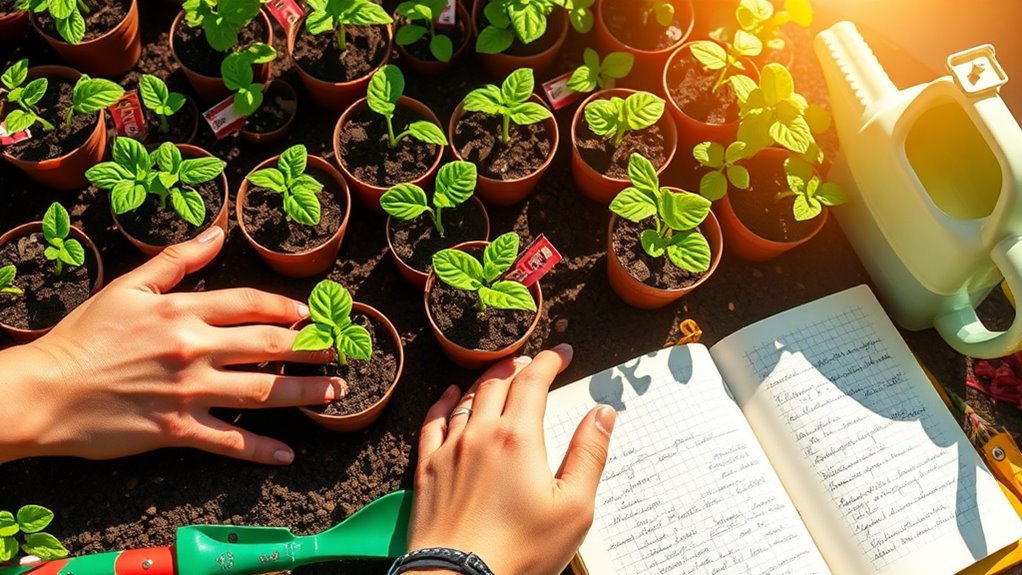10 Things Every First-Time Gardener Should Know
As gardeners have learned through centuries of trial and error, your journey into gardening starts with key foundational elements. Understanding your climate zone, for instance, can significantly impact plant selection and growth. You’ll want to consider factors such as soil quality and layout as you plan your garden. What other essential tips can influence your success? Let’s explore the ten things every first-time gardener should know to cultivate a thriving garden.
Understand Your Climate Zone
Understanding your climate zone is crucial for successful gardening, as it directly influences what plants will thrive in your space.
To maximize your gardening efforts, research the specific temperature ranges, rainfall patterns, and seasonal changes in your area. Use these insights to select appropriate plants.
Applying these gardening tips will ensure a vibrant garden that flourishes, providing you with a rewarding growing experience.
Choose the Right Soil
Choosing the right soil sets the foundation for a thriving garden, as it significantly impacts plant health and growth.
Consider soil type—loamy soil is ideal for its balanced texture and nutrient retention.
Check drainage capabilities; overly compacted or sandy soils can hinder root development.
Test pH levels to ensure suitability for your plants.
Conducting a thorough soil testing can help identify nutrient deficiencies.
Quality soil promotes robust growth and a successful gardening experience.
Plan Your Garden Layout
Once you’ve determined the right soil, the next step is to plan your garden layout effectively.
Evaluate sunlight exposure, drainage, and wind patterns in your space. Consider using raised beds or configurations that maximize space and accessibility.
Group plants with similar water and sunlight needs together. Lastly, sketch your layout to visualize plant placement, ensuring optimal growth and an aesthetically pleasing design. Additionally, incorporating design principles can help create a balanced and attractive arrangement for your flower bed.
Select Suitable Plants
As you dive into gardening, selecting suitable plants is crucial for a thriving garden. Consider your climate, soil type, and available sunlight when choosing.
Research native plants, as they often require less maintenance and are more resilient. Pay attention to growth habits and mature sizes to ensure compatibility with your available space.
Mixing perennials and annuals can also enhance visual interest and biodiversity. Furthermore, incorporating herbs for indoor gardening into your selection can provide fresh flavors for your culinary endeavors year-round.
Learn About Watering Techniques
Watering techniques play a vital role in ensuring your garden flourishes. Learn the importance of timing, frequency, and method to maximize plant growth. Consider the following options:
| Technique | Frequency | Best Time |
|---|---|---|
| Drip Irrigation | Daily | Early morning |
| Soaker Hoses | Twice a week | Afternoon |
| Hand Watering | As needed | Evening |
Proper watering not only helps your plants thrive but also promotes efficient water use in your garden! Experiment to find what works for your garden!
Master Fertilization Basics
Fertilization is crucial for enhancing soil fertility and supporting healthy plant growth in your garden.
Start by testing your soil to determine its nutrient content. Use a balanced fertilizer that provides essential nutrients like nitrogen, phosphorus, and potassium.
Apply fertilizers according to your plants’ specific needs and timing, focusing on slow-release options for sustained nutrition.
Regularly monitor plant health for signs of deficiencies. Additionally, understanding the secret signs of healthy soil can help you make better fertilization choices in the long run.
Recognize Common Pests and Diseases
Here are some key issues to watch for:
-
Aphids: Small, green insects that suck plant sap.
-
Powdery Mildew: A white fungal growth on leaves.
-
Spider Mites: Tiny pests causing stippled leaves.
-
Root Rot: A disease from overwatering that damages roots.
In addition to visual inspections, consider utilizing natural pest control methods to effectively manage these issues without harming your plants.
Stay vigilant to keep your garden healthy!
Practice Regular Maintenance
Keeping a watchful eye on pests and diseases is just the beginning of maintaining a thriving garden. Regular maintenance tasks such as watering, weeding, and fertilizing your plants are crucial. Here’s a quick reference table to simplify your routine:
| Task | Frequency |
|---|---|
| Watering | 2-3 times/week |
| Weeding | Weekly |
| Pruning | Monthly |
| Fertilizing | Every 4-6 weeks |
Be Patient and Observant
Gardening is a journey that requires both patience and keen observation. As you nurture your plants, keep an eye on:
-
Growth Patterns – Notice how quickly or slowly plants grow.
-
Soil Moisture – Check the soil’s moisture level regularly.
-
Pests – Identify any pests or diseases early on.
-
Weather Changes – Observe how weather affects your garden’s health.
These insights will guide your gardening journey.
Enjoy the Process
Nurturing a garden isn’t just about watching plants grow; it’s also about finding joy in the journey. Celebrate small victories, like when seeds sprout or blossoms appear. Embrace the learning moments, too.
| Positive Experiences | Challenges Faced |
|---|---|
| Watching seeds sprout | Dealing with pests |
| First bloom | Weather unpredictability |
| Collecting harvest | Soil issues |
Every experience contributes to your growth as a gardener.

